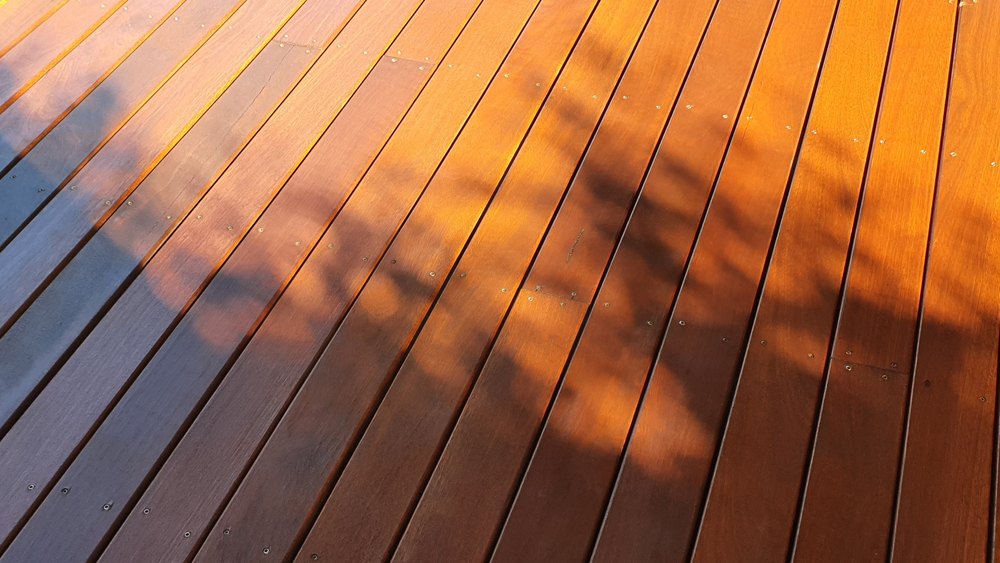Climate on Hardwood Floors

Hardwood floors have long been a popular choice for homeowners due to their timeless beauty, durability, and versatility. However, not everyone considers the impact of climate on hardwood floor performance and longevity. Understanding this relationship is essential for ensuring your hardwood floor installation remains in excellent condition for years to come. In this blog, we’ll explore how different climatic factors affect hardwood floors and offer tips to mitigate these challenges.
Understanding Hardwood Floors and Their Sensitivity to Climate
Hardwood floors are made from natural wood, which is a hygroscopic material. This means it absorbs and releases moisture based on the surrounding environment. Consequently, hardwood floors are particularly sensitive to changes in humidity and temperature, which can cause them to expand, contract, or even warp over time.
Why Climate Matters for Hardwood Floors
Climate directly influences the performance of hardwood flooring because wood reacts to moisture and temperature fluctuations. For instance, high humidity levels can cause wood planks to swell, while low humidity can lead to shrinkage and gaps between the planks. Additionally, extreme temperatures can exacerbate these issues, leading to potential structural damage.
Effects of Humidity on Hardwood Floors
High Humidity
In areas with high humidity, such as coastal regions or during summer months, hardwood floors are prone to absorbing excess moisture from the air. This can lead to problems like:
- Swelling: Wood planks can expand, causing the floor to buckle or warp.
- Cupping: The edges of the planks rise higher than the center, creating an uneven surface.
- Mold and Mildew: Persistent moisture can encourage the growth of mold and mildew beneath the flooring.
Low Humidity
In contrast, low humidity levels, often experienced during winter or in arid regions, can cause:
- Shrinkage: Planks contract, creating unsightly gaps between them.
- Cracking: Prolonged dryness can cause the wood to crack or split.
How Temperature Impacts Hardwood Floors
Temperature fluctuations can also significantly affect hardwood floors. Rapid changes in temperature can cause the wood to expand and contract, leading to structural stress. For example:
- Extreme Heat: Prolonged exposure to high temperatures can dry out the wood, making it brittle.
- Freezing Conditions: If the flooring is exposed to sub-zero temperatures, it may become more prone to cracking or splitting.
Best Practices for Managing Temperature
Maintaining a stable indoor temperature is crucial for preserving your hardwood floors. Aim to keep your home’s temperature between 60-80°F to prevent stress on the wood.
Choosing the Right Hardwood Floor for Your Climate
The type of hardwood floor you select plays a significant role in how well it can withstand climatic challenges. Here are some considerations:
Solid Hardwood vs. Engineered Hardwood
- Solid Hardwood: Made from a single piece of wood, solid hardwood is more susceptible to climate-related issues like expansion and contraction.
- Engineered Hardwood: Constructed with multiple layers, engineered hardwood is more stable and better suited for areas with fluctuating humidity and temperature.
Wood Species
Certain wood species are more resilient to climate variations. For example:
- Oak: Known for its durability and resistance to moisture changes.
- Maple: Dense and less prone to shrinking or swelling.
- Teak: Naturally resistant to moisture and temperature fluctuations.
Finishes and Treatments
Choosing the right finish can also enhance your hardwood floor’s resilience. For example, a polyurethane finish creates a protective barrier against moisture.
Preparing for Hardwood Floor Installation in Different Climates
Pre-Installation Measures
Proper preparation before hardwood floor installation is essential for minimizing climate-related issues. Key steps include:
- Acclimation: Allow the wood to adjust to your home’s environment by storing it in the installation area for 7-14 days.
- Subfloor Preparation: Ensure the subfloor is clean, dry, and level to prevent future moisture problems.
- Moisture Testing: Check the moisture content of both the subfloor and the hardwood to ensure compatibility.
Installation Best Practices
When installing hardwood floors, consider these tips:
- Use a Vapor Barrier: A vapor barrier can help protect against moisture intrusion from the subfloor.
- Leave Expansion Gaps: Allow room for the wood to expand and contract without causing damage.
- Hire Professionals: Professional installers have the expertise to ensure the job is done right, reducing the risk of climate-related problems.
Maintaining Hardwood Floors in Various Climates
Once your hardwood floor installation is complete, regular maintenance is crucial to keep it looking great and functioning well. Here’s how to care for your floors based on climate conditions:
Managing Humidity Levels
- Humidifiers: In dry climates, use a humidifier to maintain a relative humidity level between 35-55%.
- Dehumidifiers: In humid areas, a dehumidifier can help prevent excess moisture from affecting your floors.
Temperature Control
- HVAC Systems: Use heating and cooling systems to maintain a consistent indoor temperature.
- Window Treatments: Curtains or blinds can help reduce heat exposure from direct sunlight.
Cleaning and Maintenance
- Regular Cleaning: Sweep and vacuum regularly to remove dirt and debris that can scratch the surface.
- Avoid Excess Water: Use a damp (not wet) mop for cleaning, as excess water can seep into the wood.
- Protective Measures: Place mats at entrances and use furniture pads to minimize wear and tear.
Special Considerations for Extreme Climates
Tropical Climates
In tropical regions, high humidity and frequent rainfall pose challenges for hardwood floors. Consider:
- Engineered Hardwood: Opt for engineered wood, which is more resistant to humidity.
- Sealed Floors: Ensure your floors are properly sealed to prevent moisture infiltration.
Cold Climates
In colder climates, homes often experience low humidity during winter. To protect your floors:
- Humidifiers: Counteract dryness with a humidifier.
- Area Rugs: Use rugs to shield the floor from direct exposure to cold drafts.
The Role of Seasonal Adjustments
Understanding the seasonal changes in your region can help you take proactive steps to safeguard your hardwood floors. For example:
- Winter: Increase indoor humidity to prevent shrinkage.
- Summer: Use air conditioning or dehumidifiers to manage high humidity levels.
Conclusion
Hardwood floors are a beautiful and enduring choice for any home, but they require careful consideration of climatic factors to perform their best. From selecting the right type of wood to maintaining optimal humidity and temperature levels, each step plays a vital role in preserving your investment. By understanding and addressing the impact of climate on hardwood floors, you can ensure their beauty and functionality for many years to come.

